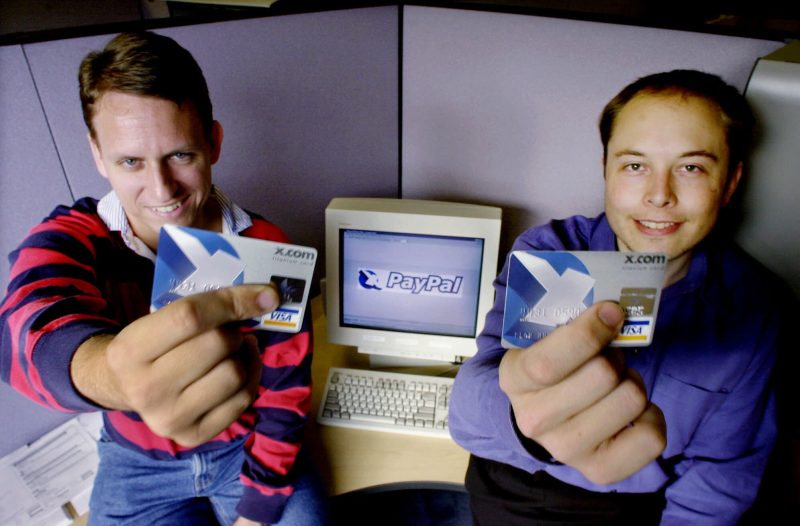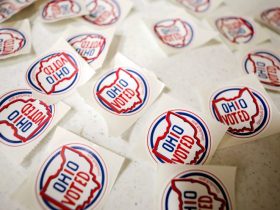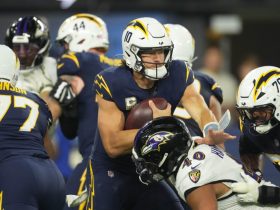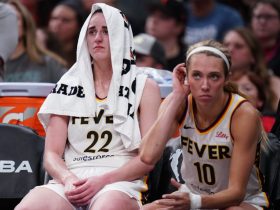There is a reason that numbers nerds tend to like elections and sports: Each involves competition that can be tracked in intimate detail through data. There’s a human element, sure, voters voting and athletes athleting. But those activities aggregate into scads of data emerging over decades — data that can be pored over, reformed, dug through and assembled.
In the modern era, though, the availability of all that electoral data presents an increasingly familiar problem: cherry-picking. The internet allowed the pattern-seeking obsessiveness depicted by Russell Crowe in “A Beautiful Mind” to become a sort of leisure activity among conspiracy-minded political enthusiasts. Grab a quote from Whatever.gov and match it to a quote from a speech by President Biden and share it on X and watch the retweets roll in.
Or, if you are good with numbers and/or computers, riffle through sets of data related to the 2020 election — maybe county-level vote results, maybe census counts; use your imagination! — and uncover all the voter fraud that Donald Trump claims occurred. Maybe you can rake in money by turning it into a movie, even. It’s been a buyer’s market for nearly a decade and it shows no signs of slowing up.
Take Douglas Frank. After the 2020 election, Frank became something of a celebrity in Trumpworld for his math-adjacent assessments of how rampant voter fraud must have occurred. His analysis was not particularly robust: He used results from a few counties in a state to create estimates of data in the rest of the counties and then suggested that the accuracy of the estimates proved some process of manipulation. But he became a mini-celebrity anyway, offering a presentation before a Trump speech and becoming a sidekick to MyPillow CEO Mike Lindell on the voter-fraud event circuit.
The problem here, as with cherry-picked theories of malfeasance in general, is that the availability of information has wildly outpaced familiarity with the systems that produce that information. Frank thought he’d found evidence of fraud by plunking numbers into a spreadsheet, but he never endeavored to explain how such fraud would have been possible across different states and different counties with different processes for casting and tallying votes. He and those like him portrayed themselves as though they were Sherlock Holmes uncovering fingerprints at a crime scene but were, in reality, pulling together little arced lines from different areas on the moon’s surface.
Those who fervently believe in the existence of rampant voter fraud are generally unfamiliar with the existing checks aimed at preventing fraud — in part because those checks are often either obvious or behind the scenes. Voter registration itself, for example, is a key element: matching voters to names and addresses makes it far harder for people to cast illegal votes. Fraud is detected in every election, yielding a small number of criminal charges for double-voting or other illegal activity. The small number is, in part, because there is so little interest in casting a vote illegally; you’re going to commit a federal crime to give your preferred presidential candidate one more vote in your state? On occasion, there are arrests related to larger conspiracies — conspiracies that include more people and therefore make them more likely to be uncovered.
In other words, there is evidence that the system works well as is and no evidence that it doesn’t. Which brings us to Elon Musk.
On Wednesday, the Wall Street Journal reported that the Tesla CEO and X owner has grown increasingly close to Trump. This isn’t terribly surprising; Musk’s Trump-friendly politics (and Trump-like persona) has been obvious for some time. But there was one new detail that stuck out.
“Musk and [investor Nelson] Peltz have told acquaintances they are working on a data-driven project to ensure votes are fairly counted, echoing Trump’s accusations of widespread fraud in the 2020 election,” the paper reports. The pair “described the initiative to Trump in the March meeting, according to a person familiar with that discussion.”
This is a very Muskian idea: take an existing product and use his tech savvy to revamp it. It worked for him with Tesla, to a large extent. It has not worked particularly well with his more-recent takeover of Twitter.
Unfortunately for his odds of success, a plan to overlay data analysis onto our elections to uproot fraud has more echoes of the Twitter effort than the Tesla one. For one thing, it is obviously rooted in Musk’s increasingly surreal view of politics. He’s not trying to prevent voter fraud because there’s rampant voter fraud. He’s doing it because the bubble in which he operates says there’s rampant fraud — just as the same people in that same bubble insisted, inaccurately, that Twitter was unfairly muting right-wing voices. For another, this idea is not particularly innovative.
This approach has been tried before, and not just by the Douglas Franks of the world. Trump himself instantiated a presidential commission centered on uncovering rampant fraud after he won the 2016 election. It collapsed in failure without uncovering any rampant fraud. Trump’s campaign hired researchers to prove fraud after the 2020 election. They didn’t find any. Trump’s campaign kept that to themselves.
It wasn’t only Trump. George W. Bush’s administration also tried to root out voter fraud, finding no evidence that it was occurring to a significant degree. Trump allies such as former Kansas secretary of state Kris Kobach (who also served on Trump’s commission) attempted to prove that rampant fraud occurred. They didn’t.
But Musk, true to form, seems to think that he will succeed where others have failed. The issue isn’t that the system works and has checks in place to prevent fraud from happening and, therefore, that rampant fraud doesn’t happen. The problem, instead, is that an insufficient level of genius has been applied to the problem, and once it is, reality will reveal itself like the blooming of a corpse flower. What is needed, the theory appears to be, is a guy who is good with numbers.
That’s what Douglas Frank thought, too.








